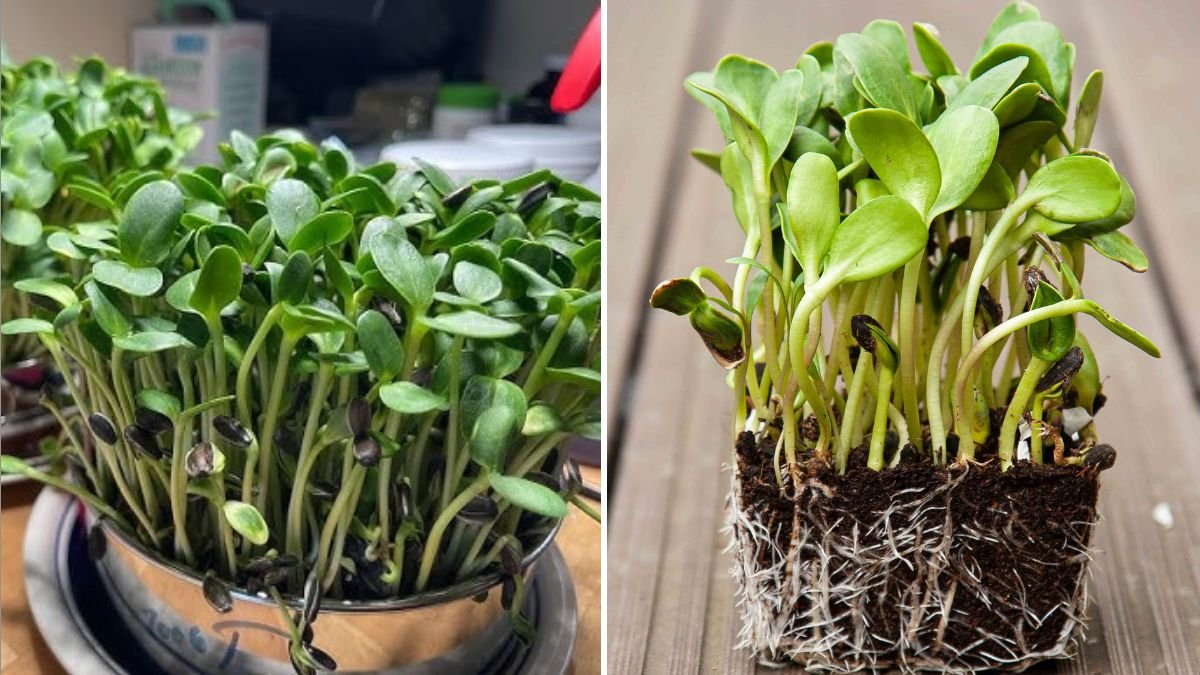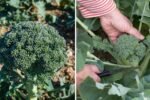Sunflowers are a symbol of warmth, optimism, and the golden days of summer. But did you know that their young shoots — often called sunflower microgreens or sunflower sprouts — are one of the most nutritious and delicious greens you can grow right at home?
Packed with vitamins, minerals, and plant-based protein, sunflower shoots are quickly becoming a go-to favorite for American gardeners, home chefs, and wellness enthusiasts alike. Whether you’re cultivating them on a sunny windowsill or adding them to your next smoothie or salad, these vibrant greens bring both nutrition and joy to your plate.
This detailed guide covers everything you need to know about growing sunflower shoots, their powerful health benefits, and creative ways to use them in everyday meals.
What Are Sunflower Shoots?
Sunflower shoots are the tender, young seedlings of the common sunflower (Helianthus annuus). Harvested just before they develop true leaves, these shoots are crisp, nutty, and full of life.
They’re often grown indoors in trays, just like pea shoots or wheatgrass, and are typically ready to harvest within 7 to 10 days. Because they grow so quickly and require minimal effort, sunflower shoots are perfect for urban gardeners, apartment dwellers, or anyone who wants fresh greens year-round.
The Nutritional Benefits of Sunflower Shoots

Sunflower shoots are a nutritional powerhouse — a true superfood in a small package. Here’s what makes them stand out:
1. Protein-Rich Plant Power
Few microgreens compare to sunflower shoots when it comes to protein. They contain up to 25–30% protein by weight, making them an excellent addition to vegetarian, vegan, or fitness-focused diets.
2. Packed with Vitamins and Minerals
They’re loaded with:
- Vitamin E (for healthy skin and immunity)
- Vitamin C (to support collagen production)
- B-complex vitamins (to boost energy)
- Magnesium and potassium (to aid muscle function and heart health)
- Zinc and selenium (to strengthen immunity and fertility)
3. Rich in Chlorophyll and Antioxidant
Sunflower microgreens are vibrant green because of chlorophyll — a natural detoxifier that helps your body cleanse toxins, improve oxygen flow, and support liver health.
4. Boosts Heart and Digestive Health
With fiber, healthy fats, and antioxidants, sunflower shoots support digestion, reduce cholesterol levels, and promote cardiovascular wellness.
5. Excellent for Weight Management and Energy
Because they’re low in calories but high in nutrients, sunflower shoots keep you feeling full while fueling your body with clean, plant-based energy.
How to Grow Sunflower Shoots at Home
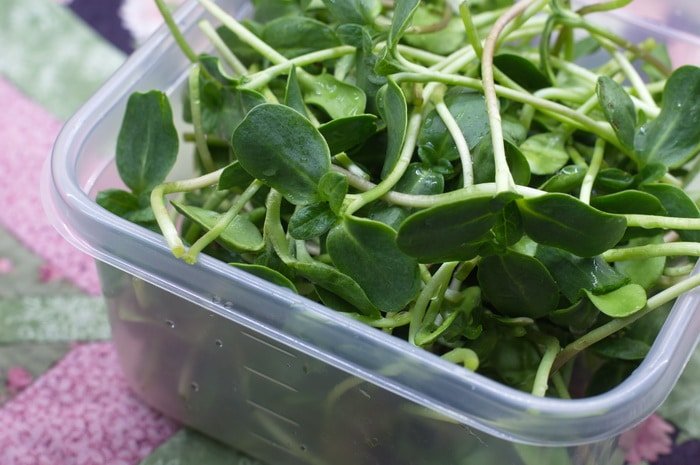
Growing sunflower shoots is one of the easiest and most rewarding gardening projects you can try — even in the middle of winter! Here’s a simple, step-by-step guide.
What You’ll Need:
- Sunflower seeds (choose black oil sunflower seeds for best results)
- Seed tray or shallow container (with drainage holes)
- Organic potting soil or coco coir
- Spray bottle or watering can
- Sunlight or grow light
Step-by-Step Growing Process:
1. Soak the Seeds
Soak your sunflower seeds in room-temperature water for 8–12 hours. This helps soften the seed coat and speeds up germination.
2. Prepare the Soil
Fill your tray with about 1.5 to 2 inches of moist soil or growing medium. Flatten the surface gently without compacting it.
3. Spread the Seeds
Evenly scatter the soaked seeds over the soil surface. You can place them close together, but avoid overlapping.
4. Cover and Wait
Lightly cover the seeds with a thin layer of soil or another tray to keep them dark and humid. Keep them covered for 2–3 days while they sprout.
5. Water Gently
Mist the seeds daily using a spray bottle to keep the soil moist but not soggy.
6. Give Them Light
Once the shoots begin to push through, remove the cover and place the tray in bright sunlight or under a grow light.
7. Harvest Time
After about 7–10 days, your sunflower shoots should be 3–4 inches tall with plump green leaves. Cut them just above the soil line using clean scissors.
8. Rinse and Store
Rinse the shoots gently, pat dry, and store them in the refrigerator. They stay fresh for up to 5–7 days.
Creative Ways to Enjoy Sunflower Shoots
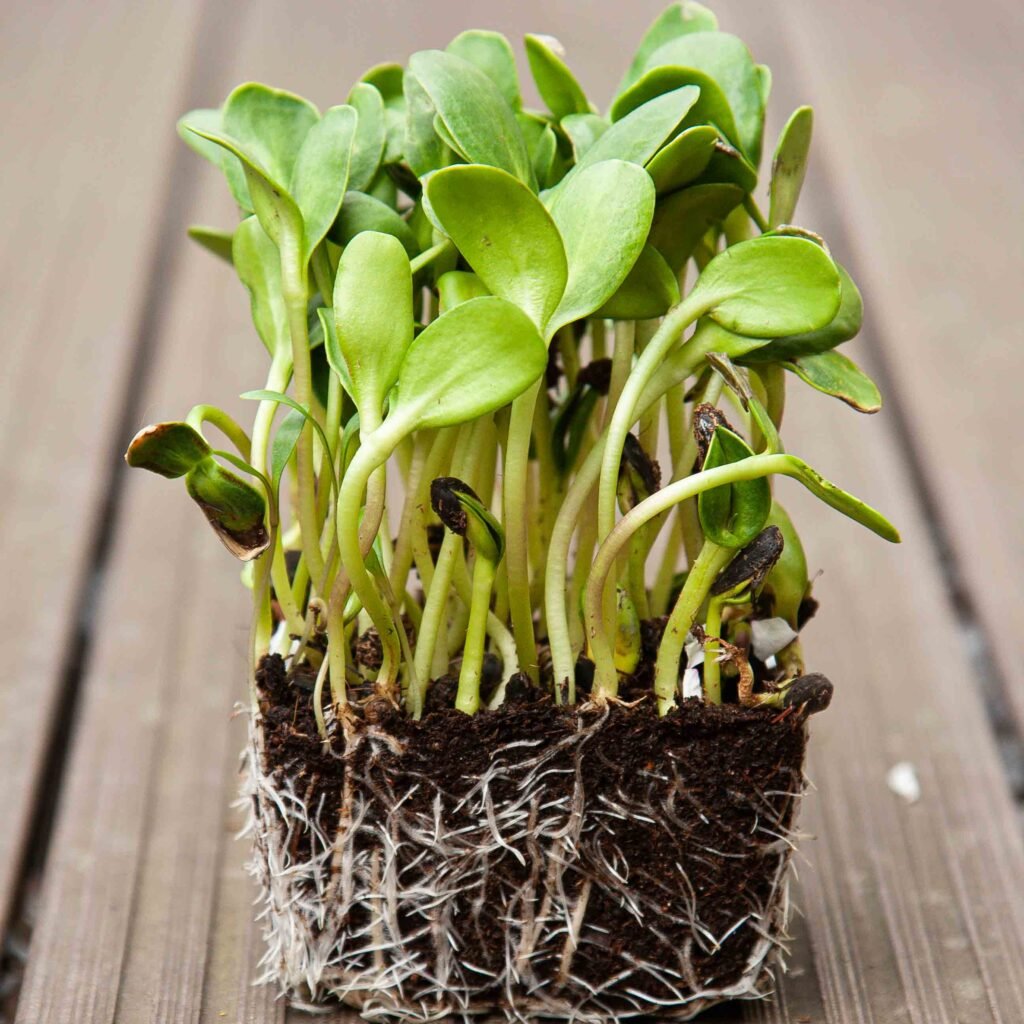
Sunflower shoots aren’t just healthy — they’re incredibly versatile. Their nutty, crunchy texture pairs beautifully with both sweet and savory dishes. Try these delicious ideas:
1. Add to Salads
Mix sunflower shoots with baby spinach, arugula, and cherry tomatoes. Drizzle with olive oil and lemon juice for a refreshing salad packed with flavor and nutrients.
2. Use as a Sandwich Topping
Replace lettuce with sunflower shoots for a fresher crunch. They pair wonderfully with avocado toast, turkey sandwiches, or veggie wraps.
3. Blend into Smoothies
Add a handful of shoots to your morning smoothie for a green, protein-packed energy boost. Combine with banana, almond milk, and peanut butter for a creamy blend.
4. Toss into Stir-Fries and Omelets
Lightly sauté the shoots with garlic and sesame oil, or toss them into omelets just before serving for extra color and nutrition.
5. Make a Sunflower Shoot Pesto
Blend sunflower shoots with olive oil, garlic, lemon, and almonds for a vibrant pesto that tastes amazing on pasta, fish, or roasted vegetables.
Why Sunflower Shoots Are Perfect for American Homes

In the U.S., more people than ever are turning to microgreens gardening as a sustainable, affordable way to enjoy fresh food. Sunflower shoots fit perfectly into this trend:
- They grow fast — ready in just over a week.
- They require minimal space — ideal for apartments and condos.
- They don’t need fancy tools — just light, water, and love.
- They offer year-round harvests, even in winter.
For eco-conscious households, sunflower shoots are a step toward self-sufficiency and reduced grocery waste. Plus, kids love watching them grow — making them a fun educational project for families.
Tips for Success
- Use fresh, untreated seeds: Only use seeds labeled for sprouting or microgreens to avoid chemicals.
- Keep them hydrated: Dry soil can stunt growth; mist daily.
- Avoid overwatering: Too much moisture can cause mold.
- Rotate the tray: Turn it every day to ensure even sunlight exposure.
- Harvest on time: Don’t wait too long — older shoots can turn bitter.
Common Problems and How to Fix Them
| Issue | Cause | Solution |
|---|---|---|
| Mold on soil | Overwatering or poor ventilation | Reduce moisture, improve air circulation |
| Yellow leaves | Lack of light | Move to a sunnier spot |
| Weak stems | Too little light or overcrowding | Provide bright light and space out seeds |
| Bitter taste | Late harvest | Harvest shoots earlier |
Environmental and Economic Benefits
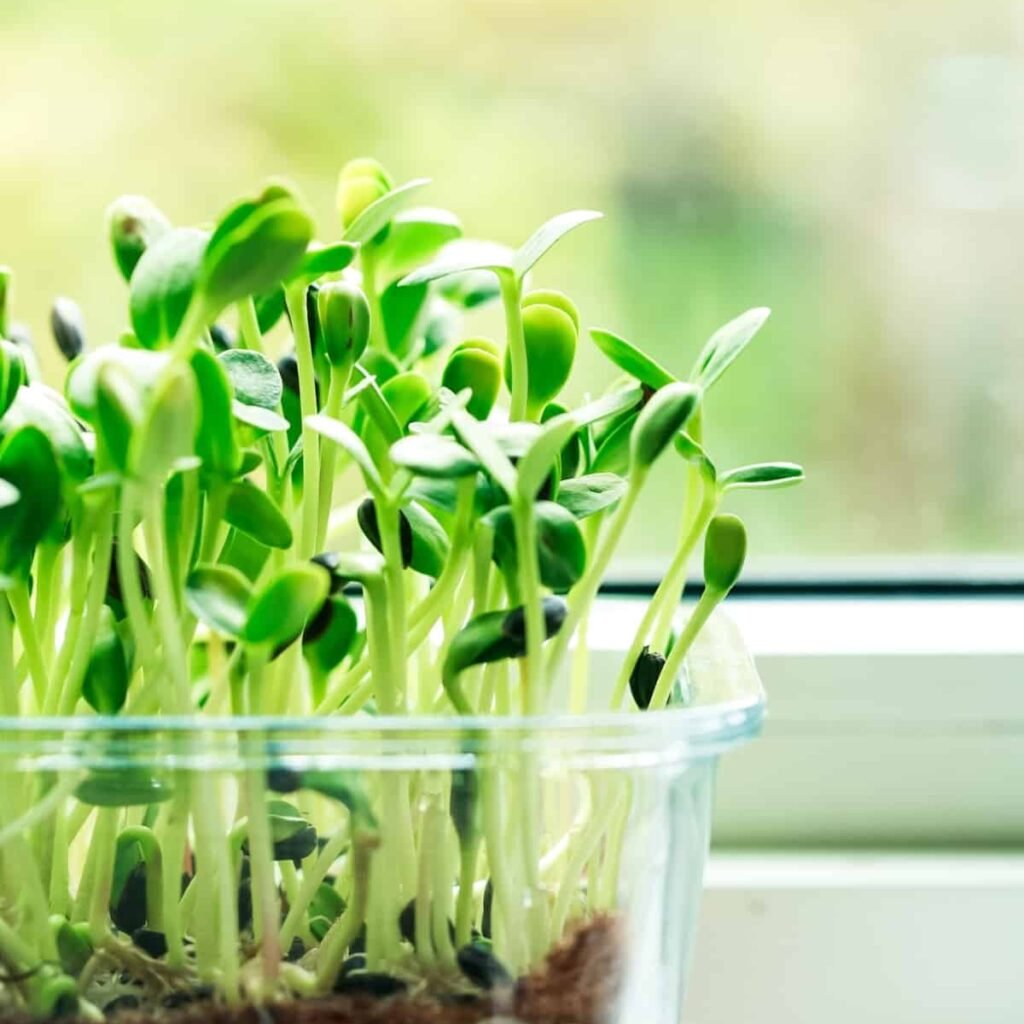
Growing your own sunflower shoots isn’t just healthy — it’s sustainable and budget-friendly.
- Less packaging waste: No need for store-bought greens in plastic.
- Zero transport footprint: Homegrown means zero food miles.
- Lower grocery bills: A handful of seeds can produce several trays of greens.
Plus, sunflower microgreens can be composted after harvesting, creating a zero-waste cycle that’s kind to the planet.
Conclusion: Small Shoots, Big Impact
Sunflower shoots are proof that good things come in small packages. These bright, nutrient-rich greens bring vitality, flavor, and sustainability to American kitchens and gardens. Whether you’re growing them on a sunny balcony or blending them into your morning smoothie, sunflower shoots are a joyful reminder that health and happiness often begin with a single seed.
So grab some seeds, plant your tray, and let your home bloom with the golden power of sunflower shoots — the next big thing in fresh, homegrown nutrition.
